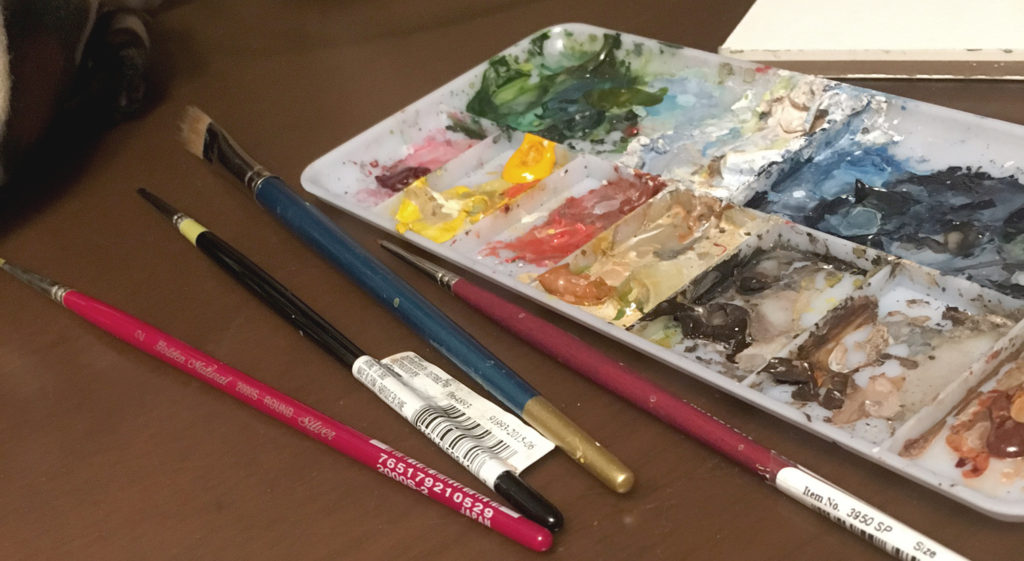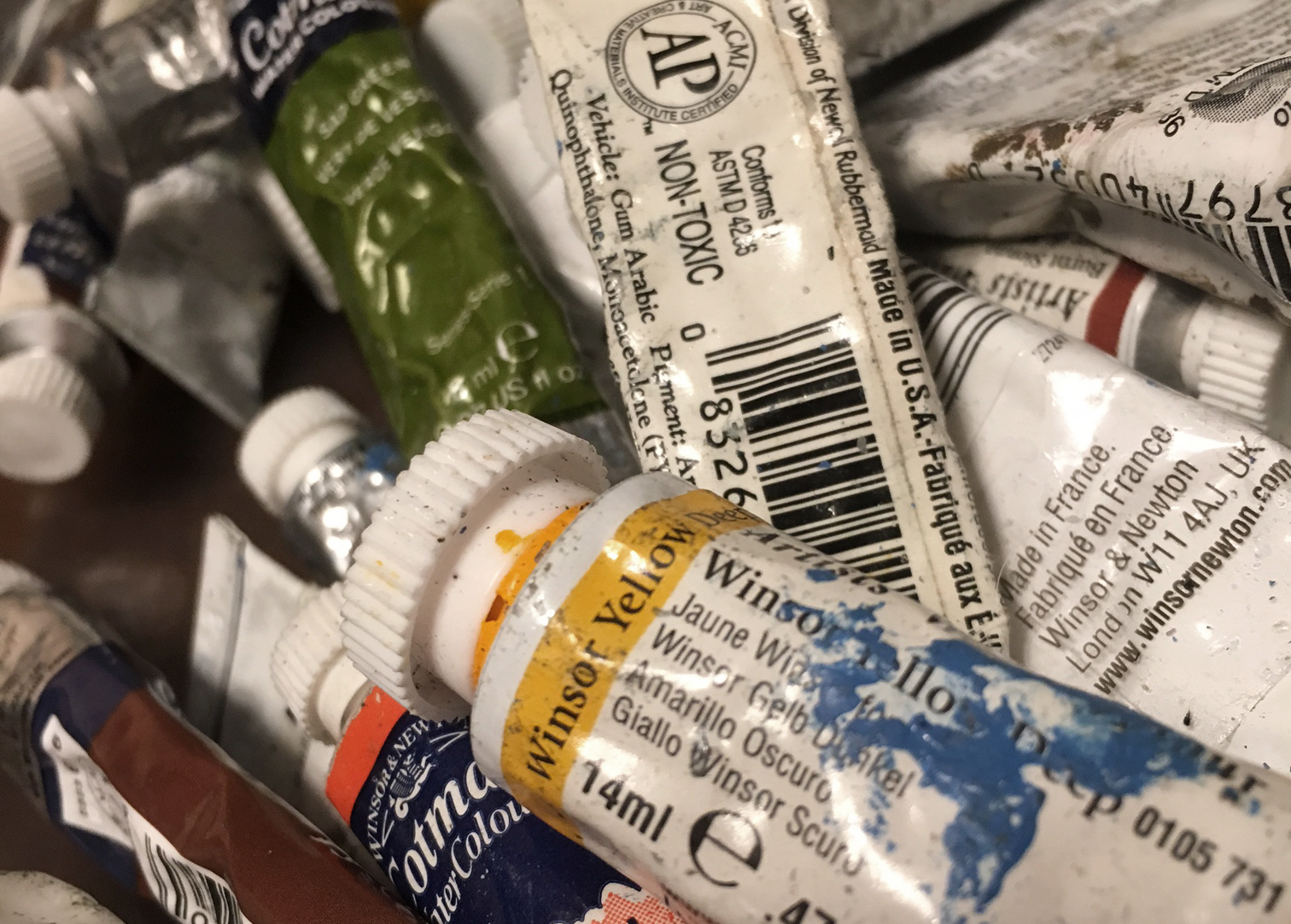I think I’m speaking for most artists when I say that we are generally pretty picky about what materials we use when we make art. For example, I only use the Winsor Newton brand of watercolor paint in tubes. I find that it has good consistency and pigment (color), and it goes on smoothly. I do occasionally settle for Grumbacher’s watercolors, but that’s only if I can’t find the color I need in Winsor Newton.

As far as paper goes, I prefer cold press watercolor blocks. Cold press paper has a smoother finish than hot press, and it’s much less textured and more forgiving. Although there isn’t a whole lot of room for error in watercolor ing general, it is sometimes possible to “erase” mistakes on cold press paper. Additionally, I like to use watercolor blocks instead of just individual sheets of paper. Watercolor blocks are usually twelve to twenty sheets of paper stacked into a tablet, with glue around three to four of the edges. This keeps the paper flat when it gets wet from the paint, and doesn’t allow it to curl like it naturally wants to. When you are finished with your painting, you simply run a sharp knife around the glued edges, and your piece of art is free from the rest of the pages. Watercolor blocks come in all shapes and sizes, and quite honestly, they are one of the best inventions for watercolor artists that I know of.

If you think I am picky about my paint and paper, you should see me trying to select a brush, especially a small one used for tiny details (like making fur). Although I’m not married to a certain brand of brushes, I am EXTREMELY picky about their shape, size, and material. I prefer sable brushes (or faux sable), and I hate it when the hairs are really long. I find that, especially with small brushes, the longer the hairs the less control the artist has – and I like LOTS of control. I usually work with a selection of four to five brushes in various sizes and shapes for any one painting, I kill at least one every three to four paintings. I find that the small ones especially wear out pretty quickly, whether that means that the hairs fall out, they fray, or they just wear down. Any of these issues makes it impossible to paint a fine line, and at a certain point I just need to throw them out. Needless to say, when I find a brush I like, I buy about fifteen of them so that I don’t have to hunt again for a while!
I once had an art teacher that told me that “everyone’s painting process is different, and you just need to find what works for you, develop it, and stick with it.” That turned out to be one of the best pieces of advice she’d ever give me, and she was totally right. It’s taken a few years and some good old fashioned trial and error, but I’ve finally found what works for me. Finding that process has not only made me more efficient, but it allows me to enjoy what I’m working on just a little more.
The moral of the story: Being picky pays off.

